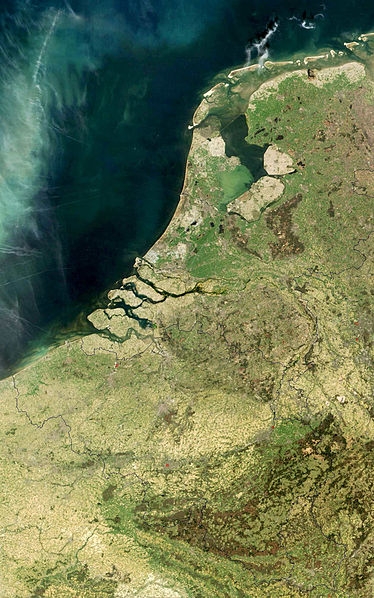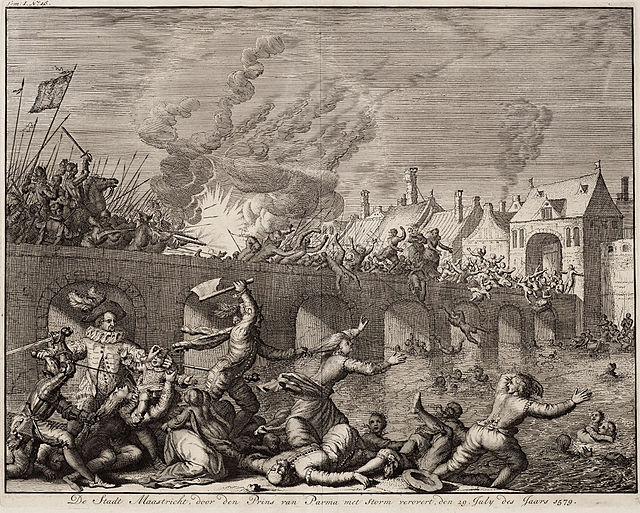In the history of the Low Countries, the Burgundian Netherlands or the Burgundian Age is the period between 1384 and 1482, during which a growing part of the Low Countries was ruled by the Dukes of Burgundy. Within their Burgundian State, which itself belonged partly to the Holy Roman Empire and partly to the Kingdom of France, the dukes united these lowlands into a political union that went beyond a personal union as it gained central institutions for the first time.
Jean Wauquelin presenting his 'Chroniques de Hainaut' to Philip the Good, in Mons, County of Hainaut, Burgundian Netherlands.
Members of the Privy Council during the solemn Funeral of Albert VII of Austria
The European region known as the Low Countries, historically also known as the Netherlands or Belgica, is a coastal lowland region in Northwestern Europe forming the lower basin of the Rhine–Meuse–Scheldt delta and consisting today of the three modern "Benelux" countries: Belgium, Luxembourg, and the Netherlands – which English and French give the same name as the traditional regional name. Geographically and historically, the area also includes parts of France and Germany such as French Flanders and the German regions of East Frisia and Cleves. During the Middle Ages, the Low Countries were divided into numerous semi-independent principalities.
The Low Countries as seen from space
Jan van Eyck, The Arnolfini Portrait, 1434, National Gallery, London
Sack of Maastricht by the Tercios de Flandes (Flemish Regiments) in 1579
Siege and capture of Tournai (1581)






